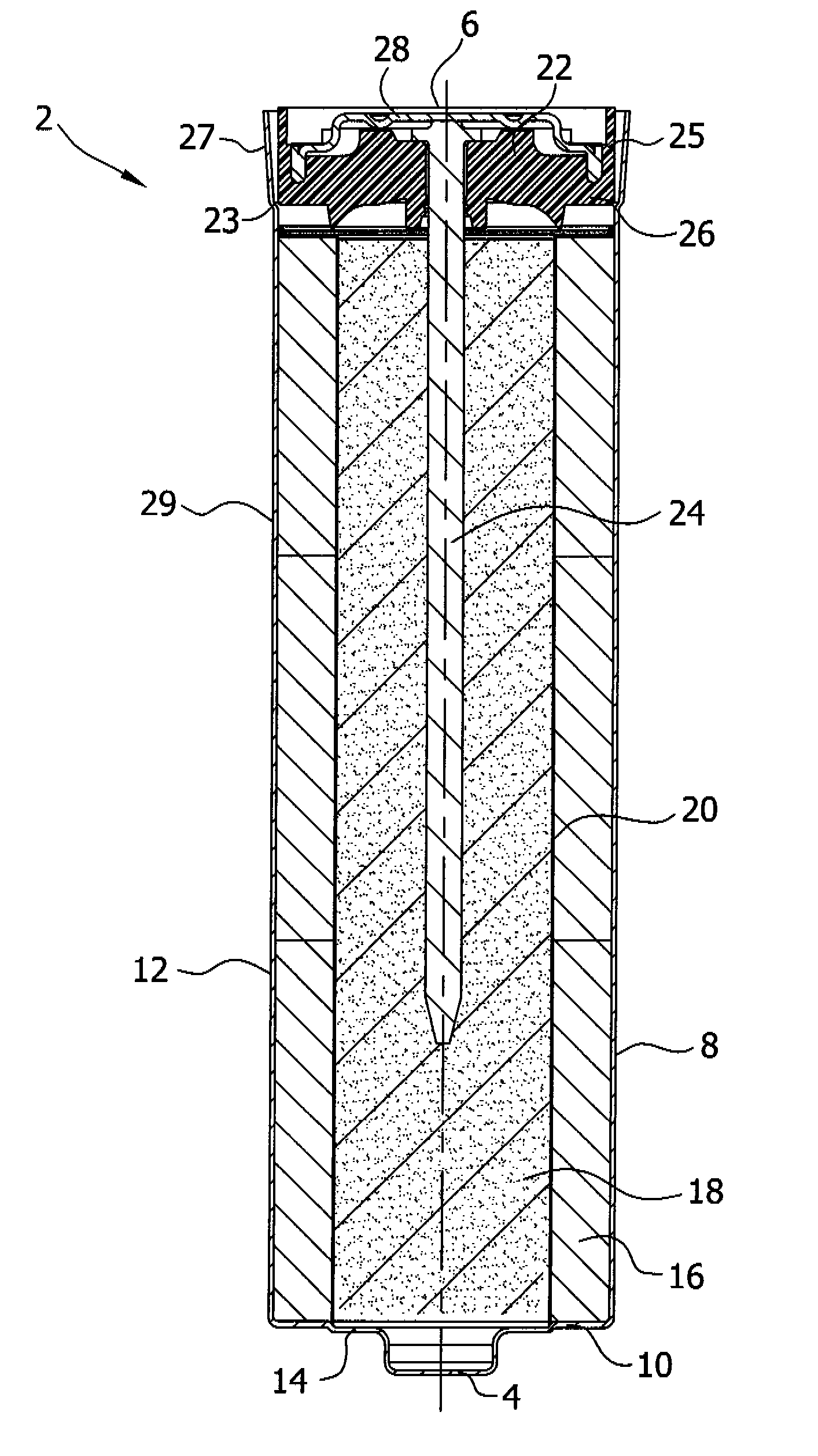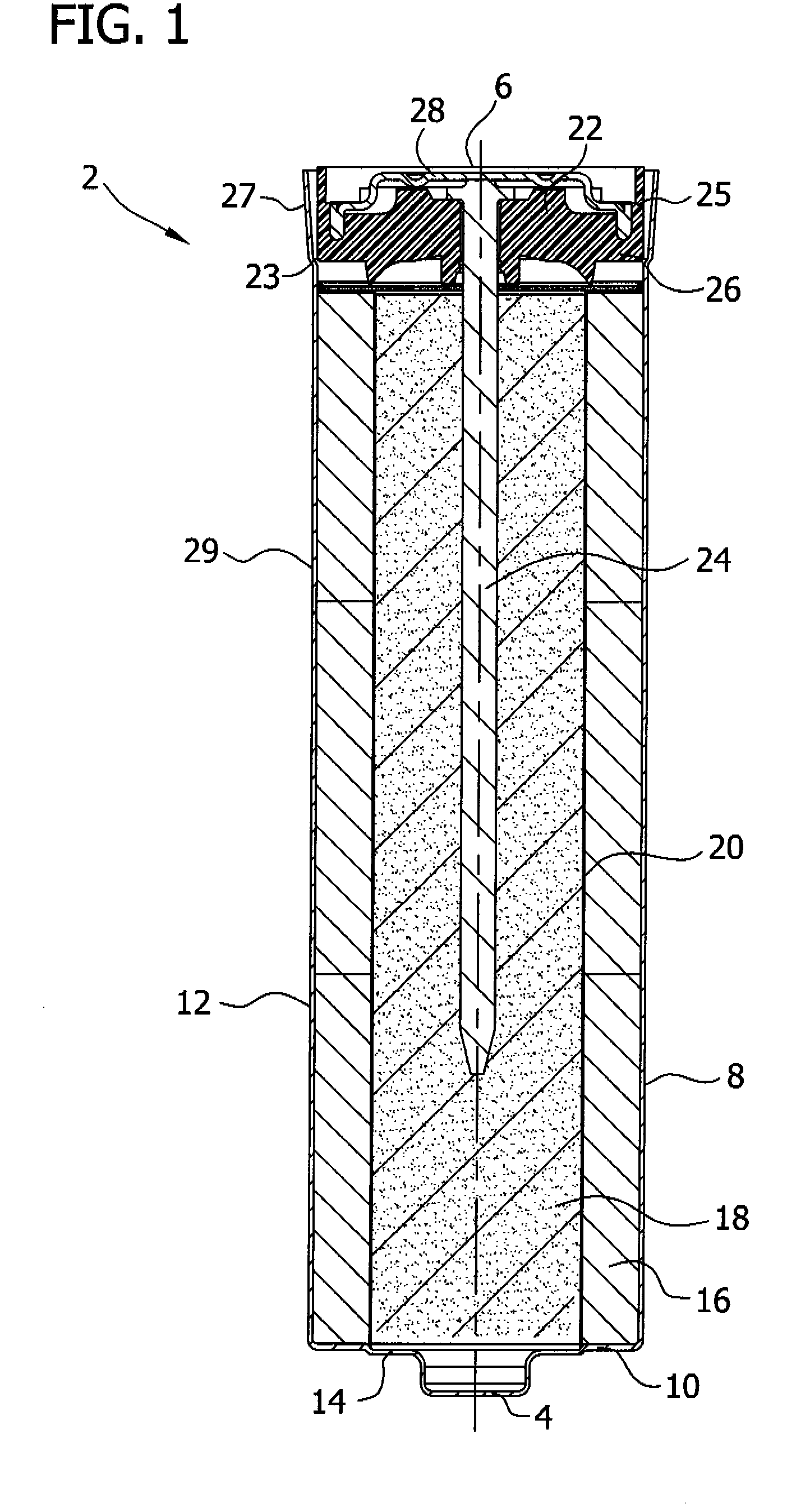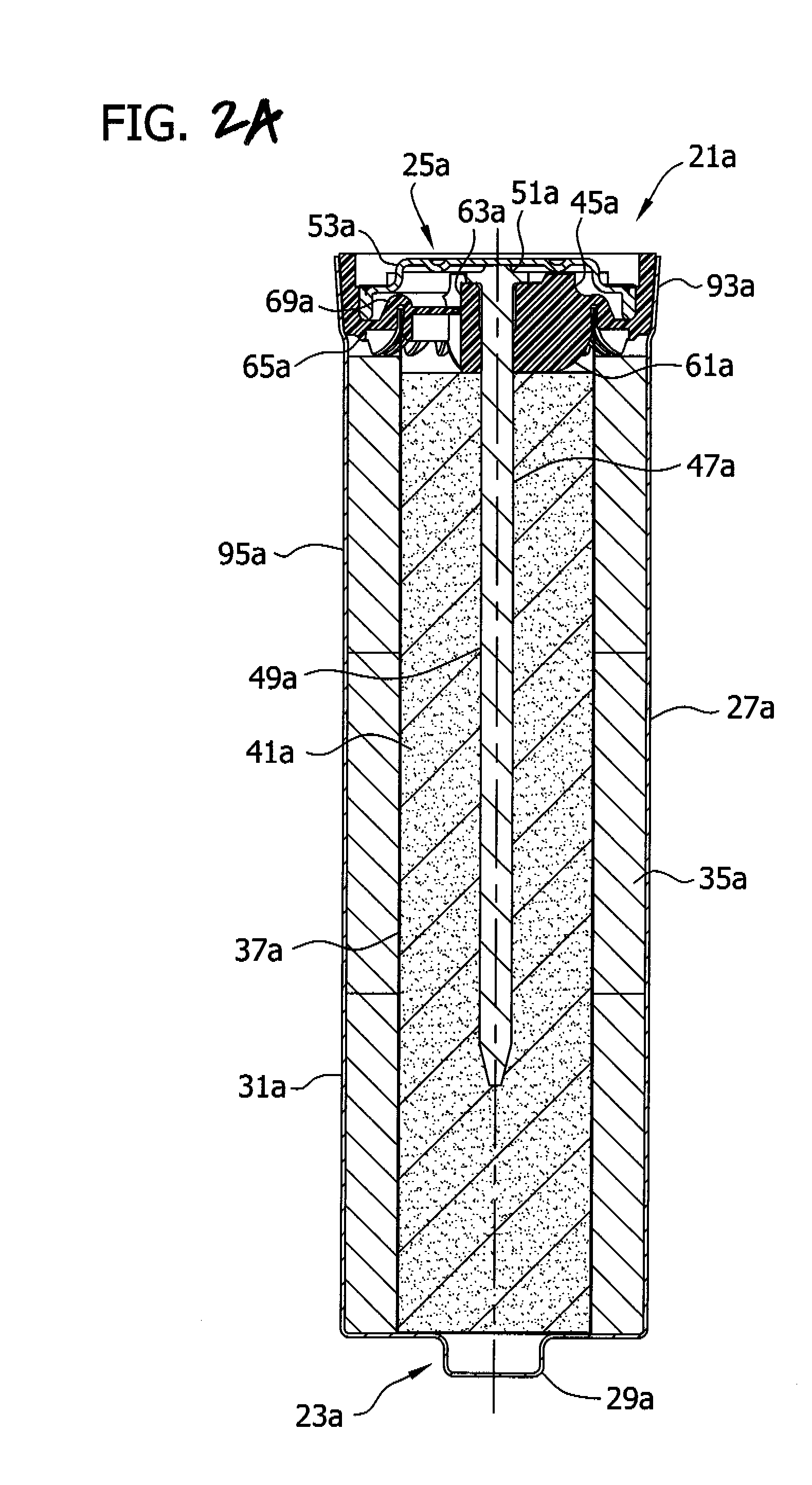Copper-manganese mixed oxide cathode material for use in alkaline cells having high capacity
a cathode material and copper manganese technology, applied in the direction of non-aqueous electrolyte accumulator electrodes, cell components, cell seperators/membranes/diaphragms/spacers, etc., can solve the problems of internal electrical short circuit or other reduction in the useful electrochemical capacity of the electrochemical cell, and reduce the potential life of the cell
- Summary
- Abstract
- Description
- Claims
- Application Information
AI Technical Summary
Benefits of technology
Problems solved by technology
Method used
Image
Examples
example 1
[0455] This is an example that illustrates the efficacy of various separators' ability to effectively limit the migration of anode-fouling soluble species. The open circuit voltage (OCV) was compared for a plurality of 357-size cells made with various separators both initially and after 1 day room temperature of storage. The cathode was CuO (commercially available from Aldrich, St. Louis, Mo.), and the cell anode was a conventional alkaline Zn gel anode having conventional zinc and electrolyte concentrations.
[0456] In most cases, two layers of separator were used in the cell, one facing the cathode (“cathode side separator”), the other facing the anode (“anode side separator”). The OCV data presented below in Table 6 includes the average of two cells of the given cell type. It should be appreciated that a decrease in OCV indicates increased migration of anode-fouling soluble copper species into the anode.
TABLE 6Cathode Side SeparatorAnode SideOCV, VOCV, VCategoryTypeSeparator(ini...
example 2
[0458] This is an example that illustrates the ability of various separators to effectively limit the migration of anode-fouling species. As explained elsewhere, Side A of the glass tube fixture was filled with 34% KOH having a known concentration of copper ions and electrolyte free of copper ions was added to compartment B. The concentration of complex copper ions on side B was measured after 1 week at room temperature.
[0459] Referring now to Table 7, the Exclusion Test was performed on various separators to determine the Exclusion Value of soluble copper, silver, and sulfur species after storage at a temperature of 60° C. Side A of the glass fixture was filled with 34% KOH solution with 0.25 g of CuO (copper oxide) and 0.25 g of CuS powder which produce the soluble copper and sulfur species concentrations shown in columns 2 and 4. For silver exclusion determination, 0.25 g of AgO was used in side A of the AgO was used in side A of the fixture to produce silver concentrations show...
example 3
[0461] This is an example that illustrates the utility of effectively limiting the migration of anode-fouling soluble species in stored 357 size button cells. Referring now to FIG. 29, four cells having CuO cathodes were stored for five days at room temperature, followed by 60 degrees C. until the cells failed (as determined by OCV, impedance and expansion as discussed previously). The OCV was continuously measured for each cell from the first day of storage. FIG. 29 shows that cellophane separators are better than FAS 350Z separator for cells containing CuO cathodes. Also, thicker cellophane separators (SF-586, 3 mil thick) outperform the thinner separator (350P00, and SC216 both are 1 mil thick) confirming results from the Exclusion Test experiments.
PUM
 Login to View More
Login to View More Abstract
Description
Claims
Application Information
 Login to View More
Login to View More - R&D
- Intellectual Property
- Life Sciences
- Materials
- Tech Scout
- Unparalleled Data Quality
- Higher Quality Content
- 60% Fewer Hallucinations
Browse by: Latest US Patents, China's latest patents, Technical Efficacy Thesaurus, Application Domain, Technology Topic, Popular Technical Reports.
© 2025 PatSnap. All rights reserved.Legal|Privacy policy|Modern Slavery Act Transparency Statement|Sitemap|About US| Contact US: help@patsnap.com



